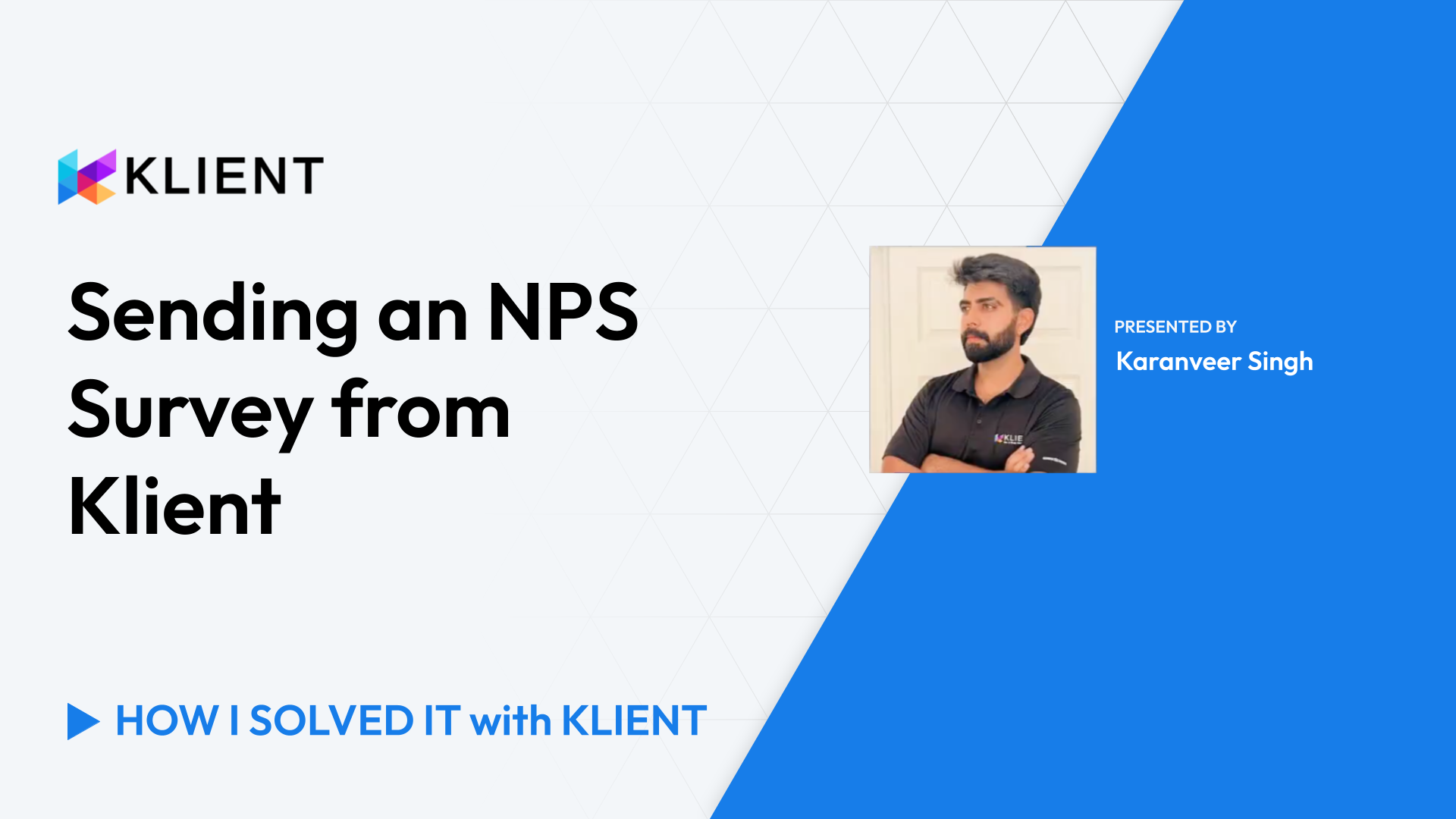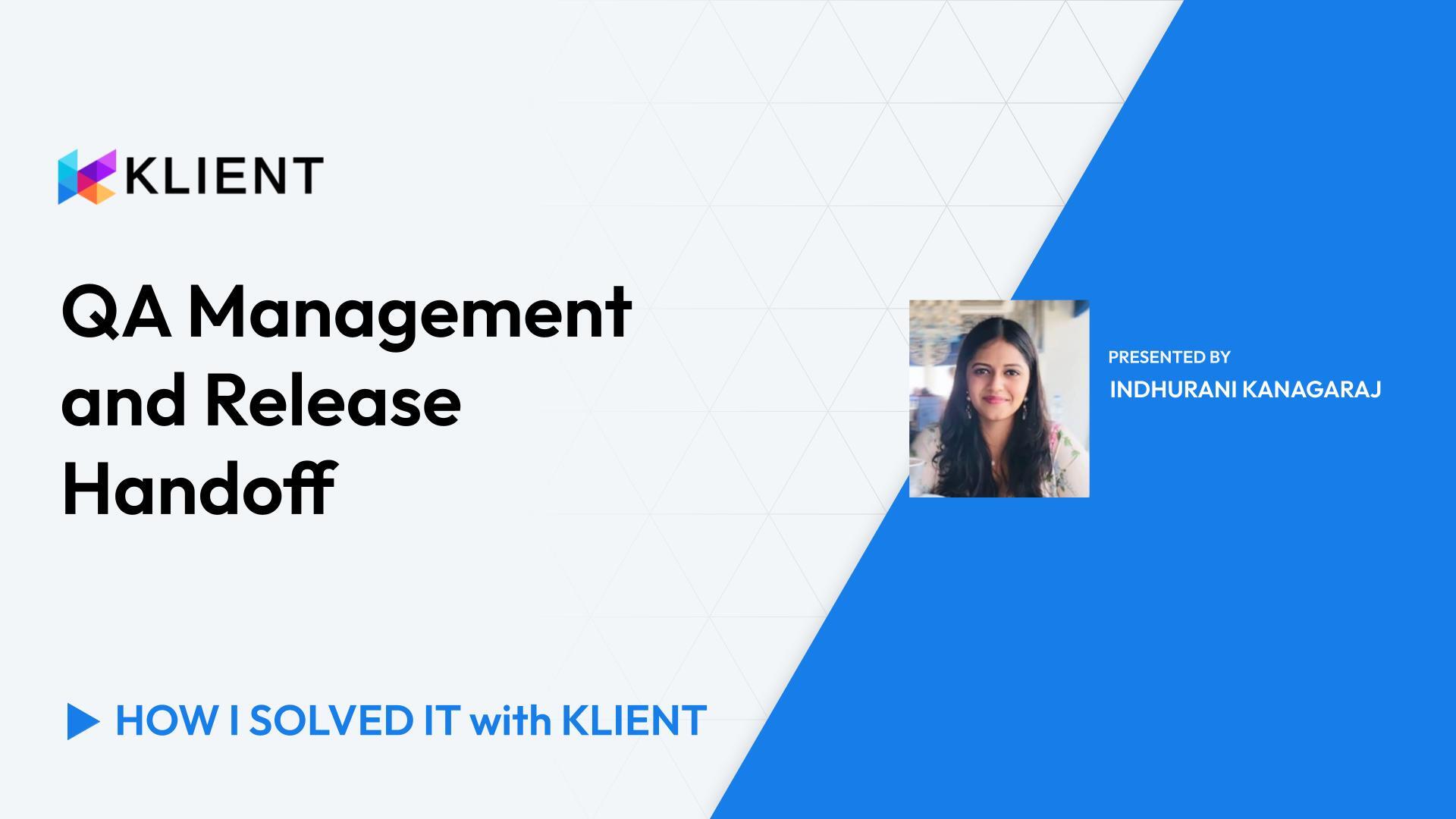Optimize your project, when to use Task, Checklist and Milestone
When to use tasks, milestones or checklist
Creating tasks in Kanban and Workspace
Scheduling resources and using checklists
Importance of milestones
0:01 – Introduction and Question from Customer
Greetings everyone! Dominic, for another ‘How I Solved It with Klient’. In this one, I want to answer a question from a customer asking when they should be using a Klient task versus a checklist item. So thank you to Rebecca for the question, we’ll look into that in just a few seconds. So first few features that we are going to cover today are mainly Klient tasks. So a regular task would be where we want to estimate and eventually assign resources to complete the effort. A specific Klient task identified as a milestone, if you want to track a key date or maybe put a validation gate, could be related to an item that will be invoiced as we’ll see in just a few seconds. And then last, the checklist items, which act as a completion item of a task or some kind of a brain dump. Basically, they are things that should be completed on a specific task.
1:01 – Creating Tasks in Kanban or Workspace
A Klient task can be created both in the Kanban or in the Workspace. Let’s start with the latter. As a task is part of a project, it should be comprised of information like the timeline, when the effort should be completed, the effort level, so the hours estimated to complete, and then the scope, what is to be completed within that task. Ultimately, the project is the sum of all tasks. The scope itself should be described within the description field, providing clarity both to your team and to your customer, making sure everyone’s on the same page. This is essential for setting clear expectations and ensuring that everyone involved understands the task requirements and deadlines.
1:38 – Scheduling Resources and Using Checklists
The task is also where you’d be scheduling your resource, who is going to complete the estimated hours and then complete the work. This is also where eventually the resource should be logging their hours, at that level. And ultimately, the checklist is a list of items that should be completed within that task. So it’s a granular information for your team of how you should be delivering what we expect them to complete before we mark that task as complete. The checklist can also affect the percentage complete of the task as it is being completed. This helps in tracking progress and ensures that no critical steps are missed.
2:12 – Importance of Milestones
As for the milestones, these tasks are key dates, validation gates that you have. It’s only a task that is marked as a milestone and if it’s a deliverable that should be invoiced, it’s only a matter of adding a milestone payment to it. This ensures that key deliverables are met on time and provides a checkpoint for evaluating project progress. Milestones can also help in aligning project phases and managing client expectations by highlighting significant achievements or stages in the project lifecycle.
2:55 – Using the Kanban Board
Another way of adding tasks is through the Kanban board. Hitting the ‘+’ sign at the top where you can create a new task for your project. Or another way I like, using the Kanban, is to go in the site panel and click on the sub-tasks. So there you’re sure where you’re adding your task, as a child of the selected tasks. You can use the same information as in the workspace; time, effort, description, so that you can add that task to your project. This visual approach helps in managing tasks efficiently and provides a clear overview of task dependencies and progress.
3:35 – Recap and Conclusion
To recap, we’ve seen different ways of adding a Klient task to a project. We’ve shown regular and milestone tasks and how we should be using them and also the checklist items that can be added to any tasks. For the regular tasks, this is where you will estimate your effort and define the scope of your project. Also where you will be assigning and scheduling your resource. Ultimately, this is where the project resources will log their hours too on their timesheets. And it’s also where usually you would be collaborating with other team members either through common fields or the Chatter option. As for the task marked as a milestone, they are key dates or validation gates within your project, often transitioning from one phase to another. They would also be used in project performance measurements. So, how well did we do on our go-lives, planned versus actual? A milestone is easily leveraged for that. And then it’s also where you would be invoicing a deliverable, upon completion.
4:35 – Final Thoughts on Checklist Items
And then finally, checklist items. They are a quick list of need-to-be-completed items for each of the tasks, providing more and more details to the team of what needs to be done. It can also be used for percentage completion of tasks, based on completing those checklists. And then usually they’re not required to time tracking. So this is not a task. It’s really something more granular so that you wouldn’t need to log hours on those items. This granularity ensures thoroughness in task completion and helps in maintaining high standards of project delivery.
4:45 – Closing Remarks
So hopefully you’ve seen some insights into what I just presented. As usual, if you have any questions or comments, feel free to reach out at support@klient.com. Thanks, have a great day!

Found this helpful?
Here are some similar videos in our serie How I Solved It with Klient
Subscribe to our channel
Visit and subscribe to our channel for more insights on leveraging Klient to solve your business challenges.










